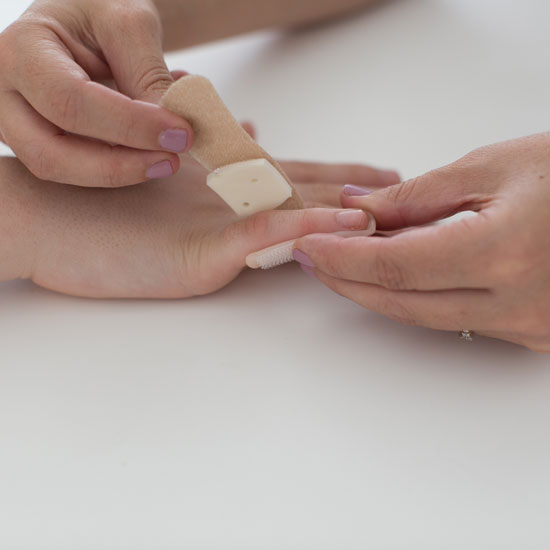Mallet Finger
A Mallet finger is the term used to describe a specific kind of extensor tendon injury. It is an injury that occurs when the tendon that straightens the tip of the finger is damaged.
Mallet fingers can happen due to the tearing of the end tip of the tendon itself, or when a piece of the bone that the end part of the tendon attaches to, breaks off. If a bone fragment is broken off, it is called an avulsion fracture.
Causes


Symptoms
The most prominent symptom of a mallet finger is the inability to straighten the tip of the finger. This presents as a hanging fingertip.
Other symptoms associated with mallet fingers (not always present) include the following:
- Swelling and redness over the tip of the finger.
- Occasionally blood collects beneath the nail.
- Stiffness and difficulty moving the finger in general.
Conservative management
A mallet finger is the only tendon injury that can be treated without surgery. There is a variety of different splints and casts used to treat mallet fingers. The aim of wearing a splint or cast is to keep the tip of the finger straight to ensure that the tendon is in the optimal position for healing. The splint has to be worn for at least 6 – 8 weeks where-after it is gradually worn less and a strengthening program is started.
The most important thing when treating a mallet finger conservatively is the compliance of the patient to wear the splint. If the splint is removed, and the tip of the finger is bent down even once during the first 6 – 8 weeks, it can result in resetting the entire healing process.
If an individual is very compliant with the splint and the conservative treatment process, the success rate is good.
In cases where the bone fragment that broke off was too big, or where conservative treatment was unfortunately not successful, surgical repair will be necessary.

Surgical management
Post-operative management
Post-operative management of a mallet finger includes the following:
- You will be immobilised in a post-operative cast or splint for 8 – 14 days after surgery.
- Your stitches may be either dissolvable or the hand therapist/doctor will remove them after 10 – 14 days.
- A splint will be made to cover the tip of your finger and keep the fingertip in extension.
- The splint is worn for 6 – 8 weeks after surgery.
- When the wire is removed the finger will likely be stiff. Therapy will then aim to mobilise the joint and strengthen the extension (lifting) of the finger.
- The splint will gradually be worn less and you should gradually regain movement and power in your finger.

Aims of hand therapy
Hand therapy after surgery for a mallet finger repair includes:
- Splinting the finger and adjusting the splint if needed.
- Management of swelling & wound care.
- Gradual exercises program after the removal of the splint.
- Scar management.
- Improvement of function and grip strength.
Post-surgery patients may be followed up in hand therapy 4 – 5 times. Follow up appointments may vary from person to person depending on tissue healing and progress made in therapy. Complete recovery after a mallet finger injury takes 3 – 6 months.
*The above text is for information purposes only and should not be seen as health advice. Please consult with your medical practitioner should you require health advice or medical treatment.
